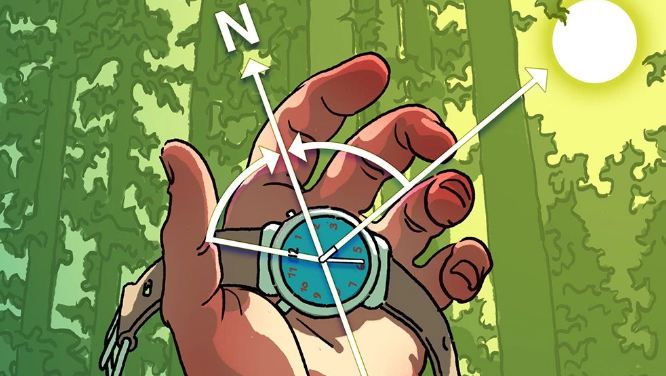Identifying directions in a survival situation can be one of the trickiest tasks imaginable, depending on the environment.
it is also one of the most important, particularly if you are traveling.
Almost all of the old adages for telling direction have flaws or caveats (Moss does not always grow on the north side of a tree, for example.)
And if the survival environment is cloudy, gloomy or rainy, it can be almost impossible.
This amazing method requires you at least be able to identify where the Sun is located in the sky (so a caveat,) but if you apply it correctly, it is almost fool-proof, regardless of the hemisphere you find yourself.
To see how to use a traditional watch (with actual hands, not a digital watch), check out the next page.
Next Page »
Pages: 1 2

this is kinda old it was in my dykes motor manual from 1922
I first saw that on Sea hunt, with Lloyd Bridges, when I was a young un. he he.
Sun always rises in the East, so when you get up, stretch out your right arm to the mornings Sun, and your left to the west if you have a good idea as to were it will set, the you are faceing North, and your back to the South; you can do the same with sticks in the ground if you are staying in one place for a few days, one in the morning’s Sun rise, and the next at Sun set about a few inch’s apart, then in a 90% angle you set North and South… Boyscouts eat your hearts out.
thats good but by 4.30 up here it is dark already and a bit fearther north it stays dark
Shouldn’t that illustration be corrected so that the ‘N’ is really ‘S’?
Micah Feser
I can actually say that it is true and I actually tested it out when I was on the prime meridian on June 21st in the English Channel at 8 am the suns bearing was exactly at 080 I have to admit it was a crazy experience
the picture is ok if you are in south pole,in north pole your ansver is corect. (i am not good in english,i hope i write corect)
makes sense….